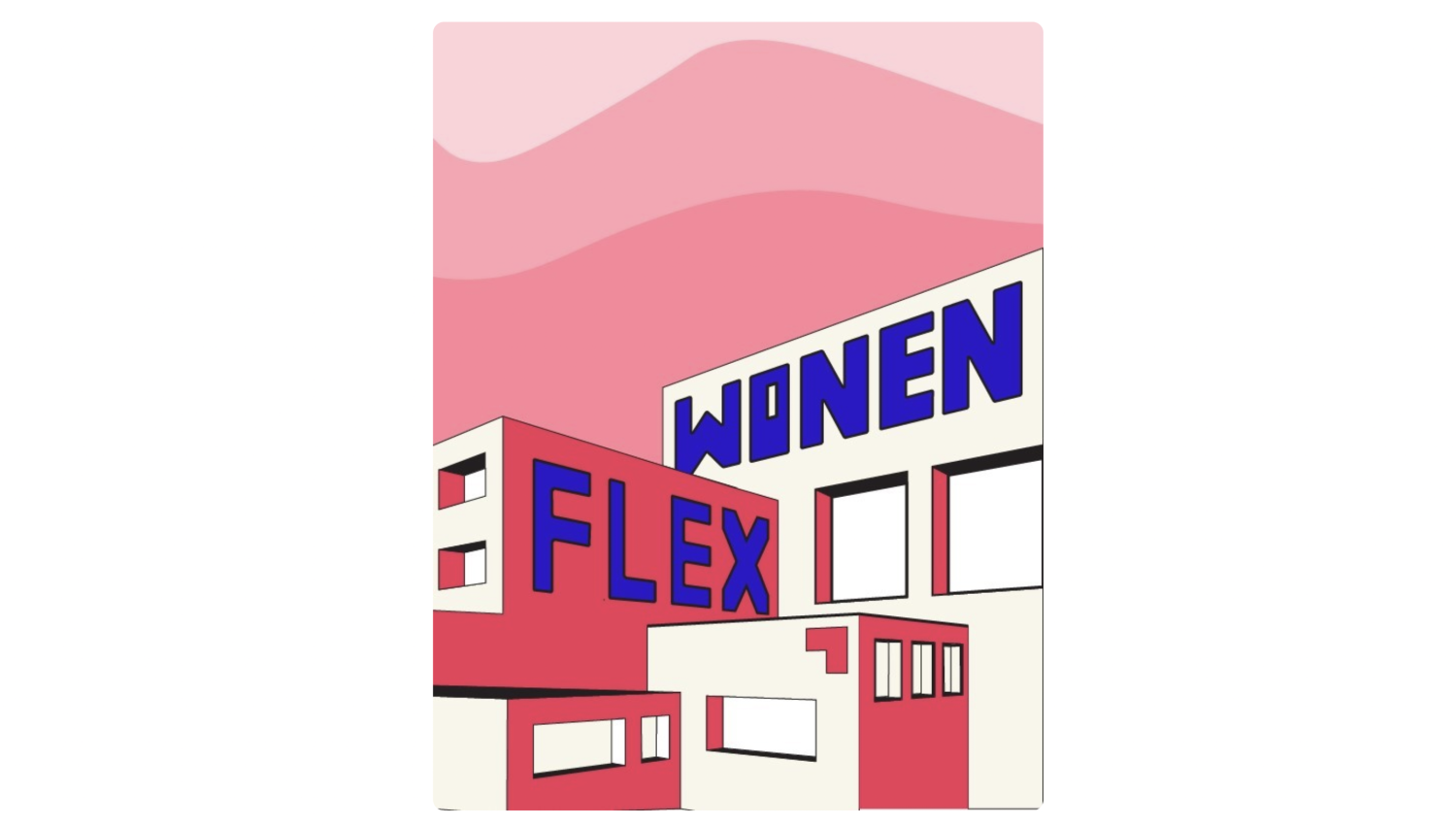Flex housing as a solution for the housing crisis? Three examples
BLOC is working on the city of the future. A task that only gets more and more interesting in these turbulent times. The subject of flex housing is often introduced as a simple and integral solution. So naturally, we dived into it. What are the opportunities, and how can we use them?
We would like to offer – based on research and our own experience – context on the social issues and our own visions. In this series, existing out of three articles, we will get into the phenomenon of flex housing. A possible solution for the Dutch housing crisis. In this first article, we will shed some light on some already existing successful flex housing cases.
The rise of flex housing
The pressure on the Dutch housing market is severe. Not only is there an absolute shortage of houses, but also do these homes nowadays have to vary far more in size, quality and, more and more often, in the available time. De classic family home is starting to fit less and less in our current society, partly due to the variety of households. On top of that, the Dutch housing market is developed for people who have the time, people who have the luxury to wait for a home that fits their needs. In reality, that is not the case for a large number of people. These people who are in immediate need of a house are called ‘speed seekers’. Think of refugees, students, status holders, seasonal workers and recent divorcees.
This explains the rise of flex housing: temporary living solutions for a need that has to be fulfilled for only a short amount of time. This short amount of time can vary from a few months to tens of years. “Flex housing is a broad subject that covers movable houses, temporal transformations of offices, temporal rent contracts and shared living complexes” (Expertisecentrum Flexwonen and Platform31, 2019).
Flex housing is more often doable in practice due to a strong improvement in quality and because it distinguishes itself from competitors by offering the option of modular building. Moreover, flex housing is currently also high on the political agenda. In the National Living and Building Agenda, minister Hugo de Jonge announced the ambition to realise 15.000 flex houses a year. Recently, he also announced the purchase of 2000 flex houses. In this article, we will dive into several successful cases of flex housing. Are these examples a sign of what has yet to come on a larger scale?

Three successful examples
Flex housing takes place in different kinds of buildings: from modular build houses to redeveloped offices. Just like the buildings, the target groups for flex housing also differ. For example, some houses are specifically for people who haven’t had a roof above their head for quite a while, others for people who are in immediate need of a house (for example due to a changed home situation) and again others because they are starting a new phase in life, like students or starters. Whoever the target audience, all have in common that they need a house as soon as possible for either a short, medium-long or longer time. Underneath are three cases of flex housing for different target audiences.
Welkom- Veenedaal
Flex housing complex ‘Welkom’ in Veenedaal exists out of 81 apartments for mainly one-person households, but in some cases also for two. This complex has a clear target audience: vulnerable speed seekers. The idea of these homes is that people who for whatever reason suddenly became homeless, still get a chance to live in a house and are not left to their own devices.
Ever since 2017, the building Welkom is situated in is open for flex housing. Before this, it used to be an office. The residents are allowed to live in one of the studios or apartments for two years. During this time, they get the help they need to get their lives back on the rail so that they are well prepared to join society again once they leave the flex housing complex.
As a flex housing organisation, Welkom has a clear goal: helping speed seekers that have become homeless for whatever reason. Giving them a temporary house, getting them back on track and helping them get their lives back together are the main focus. This target audience is the kind of audience that is often associated with flex housing. Despite this group definitely being an important target audience, is it also important to realise that flex housing can be used for a far more diverse audience. This can be seen in the next two cases.
De Ravel – Utrecht
Youths are a flexible target audience who fit well within the dynamic character of flex housing. Currently, there is a huge shortage of student and starter housing. Therefore, it is no surprise that several flex housing organisations are focusing mainly on this target audience.
One of these organisations is De Ravel in Utrecht. Their focus is specifically on youths. The old, transformed office exists out of 180 rooms. These exist out of bedrooms, shared living rooms, working spaces, activity rooms and more. Many young folks go through a lot of changes during this period in their lives (they’re studying, have side jobs and are in the pre-working-life stage, aka the free, discovering time of college life). Therefore, this group is ultimately fit to temporarily inhabit vacant buildings. Most youths are, after all, looking for a living space for a relatively short time. Conclusion: flex housing for students and starters is an ultimate fit.
Wonen bij LILY – Lelystad
Wonen bij LILY is a housing project in Lelystad. It consists of 147 so-called ‘mid-stay apartments’ (homes intended as temporary houses, not permanent ones) destined for a diverse target group. The project is granted permission to exist for at least fifteen years and consists out of movable homes. In contrast to the two previous cases, this project uses ‘modular construction’ (a construction technique in which large parts of a building are produced in multiples in a factory, and which are therefore easy to disassemble and move). As a result, a completely new residential complex can be built within a short period of time and, if necessary, it can be adapted, moved or expanded later on.
This case focuses in particular on target audiences who generally find it less easy to find a place to live in, but who urgently need a roof over their heads. This leads to a diverse group of residents. Once someone has accepted a home in the complex, they may stay here indefinitely. What is also striking about this flex house project is that there are also homes for larger households. Thus, small families that meet the requirements of the project can also settle in the three-room apartments. This case demonstrates the diversity of flexible living.

Why isn’t flex housing happening on a large scale yet?
These three examples show that flexible living is possible and that it works. And that it also offers a solution for different target audiences: speed seekers, students, starters and even families. However, flexible living is not yet completely off the ground and it often happens on a small scale. This has to do with practical obstacles, financial obstacles and the notion of flexible living (Gebiedsontwikkeling.nu, 2022). Opposite of these challenges, however, there are a lot of advantages and possibilities of flexible living. In the next article, we will therefore discuss all these opportunities and challenges.
What do you see as the biggest opportunity and threat of this trend? Let us know!
Bronnen
https://123flexwonen.nl/praktijkvoorbeelden/welkom-in-veenendaal/
https://vng.nl/sites/default/files/2019-11/p31_factshflexw-samen_def2.pdf
https://www.sociuswonen.nl/locaties/de-ravel/
https://www.nieuws030.nl/nieuws/jongeren-klussen-voor-eigen-kamer-in-de-ravel/
https://www.wonenbijlily.nl/het-project/
https://jansnel.com/modulair-bouwen/
https://flevopost.nl/regio/147-woningen-voor-spoedzoekers-opgeleverd-in-Wonen-bij-LILY-27325138.html
Interesse? Contacteer Fred!

Fred Witte
- fred@bloc.nl
- +31 6 16 21 67 79

